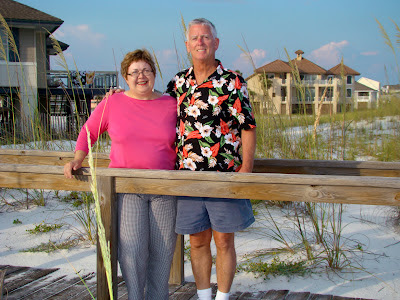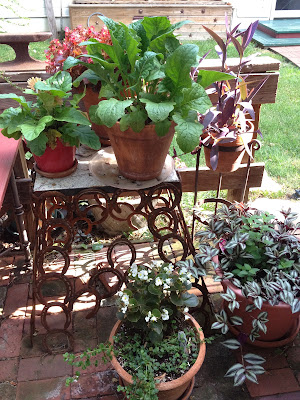I often feel strangely disoriented when I step out of an alternate reality in the cottage where I've been reading into the kitchen of our main house, where tonight I absentmindedly nibble a newly ripe grape tomato from the Early Head Start garden, experiencing the crunch of the outside skin followed by the sweet juiciness of the tomato's pulp. My mind moves on to thoughts of making okra, tomatoes and corn tomorrow, using the fruits of the garden. I wonder about what new zucchini dish to try next, then fret momentarily about getting the house clean enough for some young friends from New Orleans to shoot scenes for a Louisiana Film Prize film here over the Fourth of July.
Last weekend I rarely emerged from my fictional world when I holed up and read four books, one right after the other. In this alternate Universe, before I arrived at the castle, I was at the beach:
An Appetite for Murder: a Key West Food Critic Mystery, by Lucy Burdette. New York: New American Library (a division of Penguin Group). 2012
 Hayley Snow wants to remain in Key West where she currently resides in a small bedroom on the house boat of her former college roommate, but she needs a job. Hayley moved to Key West to live with a new man in her life, but after a few months, he has dumped her. Hayley is dismayed to discover the new woman in her ex's life, Kristin Faulkner, is also the person who would be her boss at the Key West style magazine where Hayley has applied to be the food critic. When Kristin is murdered, Hayley becomes a prime suspect, and she must clear her name if she has a chance of landing her dream job.
Hayley Snow wants to remain in Key West where she currently resides in a small bedroom on the house boat of her former college roommate, but she needs a job. Hayley moved to Key West to live with a new man in her life, but after a few months, he has dumped her. Hayley is dismayed to discover the new woman in her ex's life, Kristin Faulkner, is also the person who would be her boss at the Key West style magazine where Hayley has applied to be the food critic. When Kristin is murdered, Hayley becomes a prime suspect, and she must clear her name if she has a chance of landing her dream job. Hayley, as amateur detective, turns out to be a trouble magnet, but her exploits are entertaining for me, the perfect genre mystery--strong setting; interesting, idiosyncratic heroine; and fast moving plot. I really enjoyed this mystery and look forward to the next book in this new series, Death in Four Courses, coming in September. This book was a Kindle download for our Florida vacation, but I never got around to reading it at the beach. It was perhaps even more enjoyable to visit this wet corner of Florida after our return to hot, parched Louisiana.
 |
| Author Robert Isleib aka Lucy Burdette |
Author Lucy Burdette is the pen name for clinical psychologist Roberta Isleib who writes two other mystery series under her own name--the Advice Column Mystery series and Golf Lover's Mystery series. Isleib has been nominated for various awards for mystery authors and is a past-president of Sisters in Crime.
A Year by the Sea: Thoughts of an Unfinished Woman, by Joan Anderson. New York: Doubleday. 1999.

My next trip to the beach was with author Joan Anderson as I read her non-fiction account of a year spent alone in her family's rustic Cape Cod cottage, where she searches for answers about her life and her marriage. This journey of self-discovery is interesting to me because of the setting, the people she meets and the jobs she holds. The book, another Kindle download, is adequately written but doesn't contain the beauty of writing and depth of self-reflection of Anne Morrow Lindbergh's Gift from the Sea, for example.
Anderson, according to her blog, began her writing career as a stringer for Gannett newspaper chain, moved on to creating essays for children's photo books, and finally to the genre of memoir writing and a career helping other women "find themselves" through retreats she leads for women at Cape Cod or other locales in across the country. Anderson apparently gained fame and popularity through appearances on Oprah and other television shows. Anderson has written five memoirs in all. While I don't rule out reading another of her books, I wouldn't seek them out.
 |
| Author Joan Anderson |
After my extended visit to the beach, I head back to Indian territory with Walt Longmire, plus a new mystery series set on Indian reservation. More about that tomorrow....













































